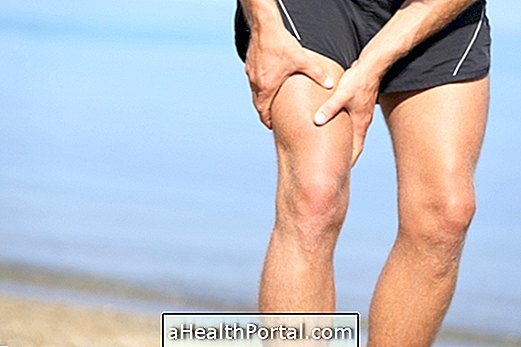Back training at home can be done to achieve different goals, from improving posture, strengthening muscles, increasing definition or even generating hypertrophy. These exercises allow you to work on all the back muscles, such as the rhomboid, the trapezius and the round muscle, but they also strengthen muscles in other places, especially the deltoid, the biceps, the triceps and the abdomen.
Training at home can be done without weight, but for those who want to increase the intensity of the exercises it is recommended to use weights, which can be a pet bottle with sand, backpacks with a rice packet or simply dumbbells. Another option is to use an elastic band, for example.
Before starting training, it is important to have a medical consultation to assess physical conditions and to have guidance from a physical educator who must indicate the weight for each exercise individually.
How to do the back workout
Back training at home can be done 2 to 3 times a week, in 2 to 3 sets of 10 to 15 repetitions, depending on the exercise. The ideal is to choose 3 to 4 exercises per workout.
It is important to warm up before exercising, it is a good option to move your arms up and down alternately, and to the sides, several times and at a fast pace, for example.
Some exercise options for doing a full back workout at home are:
1. Curved row
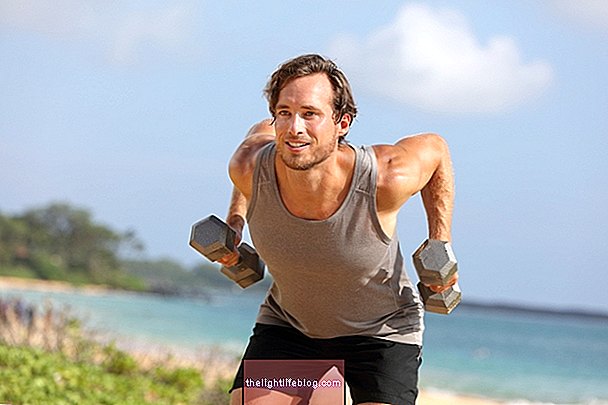
The curved stroke is an excellent exercise option for the back, as it works the upper back muscles, in addition to the deltoid, trapezius and biceps, improving muscle strength and endurance and also posture. This exercise should be done with the use of weight.
How to do it: standing, with your legs shoulder-width apart and your legs slightly bent, lean your torso forward. The arms should be aligned with the body and the hands turned inwards, holding a weight in each hand. It is important that the back is straight and the abdomen is contracted. Pull the weight upwards, flexing your arms. Slowly lower your arms towards the floor, stretching them completely. With each movement of the arms, one should inhale when the arms are straight and exhale when they are flexed. Do 2 to 3 sets of 12 repetitions and rest 1 minute between sets.
2. Inclined inverted crucifix
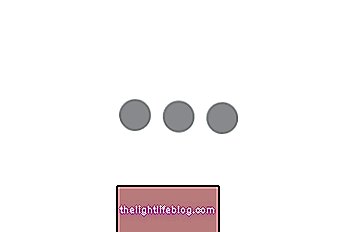
This exercise works to strengthen and define or hypertrophy the muscles of the back such as the rhomboid, the trapezius and the round, in addition to the muscles of the shoulders, chest and abdomen. This exercise should be done with the use of weights or an elastic band.
How to do it: standing, with your feet shoulder-width apart and your arms along your body, hold a weight in each hand. With your abdomen contracted and your back straight, lean your torso forward. Raise your arms to your sides without flexing your elbows and with your palms facing down, until they are at shoulder level. Lower your arms slowly, returning to the starting position. It is important to inhale when your arms are down and exhale when you raise your arms.
If the elastic band is used, the position of the exercise is the same, however, you must place the elastic band on the floor, step in the middle of the band with both feet and grab each end of the band with your hands. Slowly raise your arms by pulling the band up and then lowering your arms again. Repeat the movement of the arms 10 to 15 times in 2 to 3 sets.
3. Lifting arms
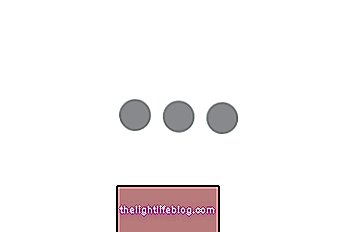
The arm lifting exercise allows you to strengthen and develop the muscles of the upper back such as the trapezius and rhomboid, in addition to the arms, shoulders and chest, being a good option for people who want hypertrophy of the back and shoulders. This exercise should be done with the use of weight.
How to do it: sit on a bench or chair and place the weights so that the arm and forearm form a 90 degree angle. It is important that the palms of the hands are facing forward, the back always straight and the abdomen contracted. Lift the weights until your arms are straight and return to the starting position.
4. Inclined arm flexion
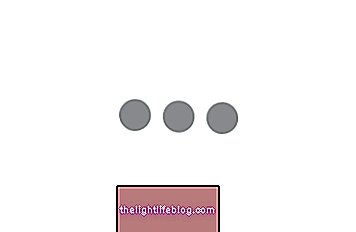
Inclined arm flexion works with various muscle groups, including the back, triceps, chest and abdomen, which allows you to strengthen and define the back muscles. This exercise does not need weights and must be done using a surface to create the inclination of the body like Kettle, stool or chair, for example.
How to do it: with your arms stretched out in front of your body, support your hands on the surface, at a distance slightly greater than the width of your shoulders. Keep your feet on the floor, your legs straight and your spine straight. Contract your abdomen and flex your elbows until your chest touches the surface and return to the starting position. You can do 2 to 3 sets of 8 to 15 repetitions each, resting for 60 to 90 seconds between sets.
5. Superman
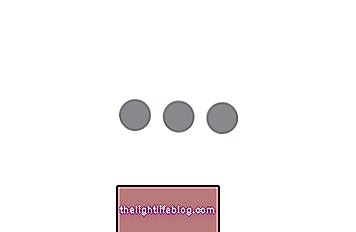
The exercise of Super man simulates the position of the superman's flight and works to strengthen the lumbar region of the back, in addition to the muscles of the abdomen, glutes, hips, posterior thighs and shoulders, improving posture and flexibility. To do this exercise it is not necessary to use weights.
How to do it: lie on the floor with your stomach down, with your legs straight, arms extended above your head and your palms facing down. Contract the abdomen, buttocks and lumbar spine. Raise your arms and legs back, as if you were going to fly. It is important that the head is aligned with the spine and that is why it is important to keep your eyes on the floor. In addition, the elevation of the legs and arms must not exceed 20 cm from the floor. Hold this position for 2 to 5 seconds and return to the starting position. Repeat this movement for 1 minute.
6. Surfboard
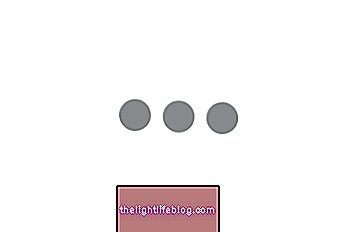
Although the plank is an exercise more focused on strengthening the muscles of the abdomen and core, it is also considered a complete exercise, that is, that works other areas of the body, including the back. This exercise does not require the use of weights.
How to do it: lie on your stomach and then raise your body, supporting only your forearms and toes on the floor, always with your abdomen and buttocks contracted and your head and body straight, aligned with your spine. You should stay in this position for as long as possible. You can start with 30 seconds and gradually increase the time. This exercise is not done in series.
What to do after training
After back training, stretching should be done to help relax the muscles, tone the muscles, improve flexibility, increase circulation and prevent injuries.
Some stretching options include:
1. Sit on your heels
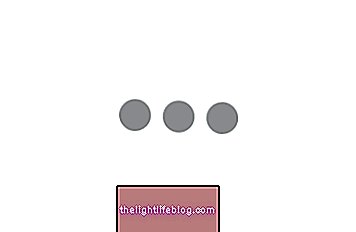
This stretch allows you to stretch the back muscles such as trapezius, rhomboid and round, in addition to the deltoids, pectorals and spine, and should be done sitting down.
How to do it: get on your knees on the floor and place your buttocks on your heels, as if you were going to sit down. Lean your torso forward, bringing it closer to the ground, keeping your arms straight and your palms down. Do this movement for 30 to 60 seconds.
2. Lateral trunk flexion
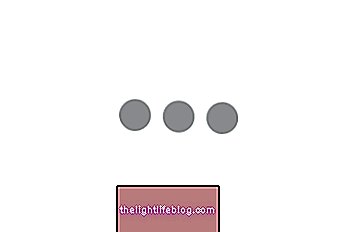
The lateral flexion of the trunk stretches the muscles of the back, in addition to the back and hips and must be done in a standing position.
How to do it: standing, with your feet shoulder-width apart, raise your arms upwards keeping them extended and join one hand to the other. Tilt your body to one side, as much as you can, and return to the starting position and tilt to the other side. Do this movement for 30 for each side.
Was this information helpful?
Yes No
Your opinion is important! Write here how we can improve our text:
Any questions? Click here to be answered.
Email in which you want to receive a reply:
Check the confirmation email we sent you.
Your name:
Reason for visit:
--- Choose your reason --- DiseaseLive betterHelp another personGain knowledge
Are you a health professional?
NoMedicalPharmaceuticalsNurseNutritionistBiomedicalPhysiotherapistBeauticianOther
Bibliography
- GEHM, David G .; CHAOUACHI, Anis. A review of the acute effects of static and dynamic stretching on performance. Eur J Appl Physiol. 111. 11; 2633-2651, 2011
- HOTTA, Kazuki; et al. Daily muscle stretching enhances blood flow, endothelial function, capillarity, vascular volume and connectivity in aged skeletal muscle. J Physiol. 596. 10; 1903–1917, 2018


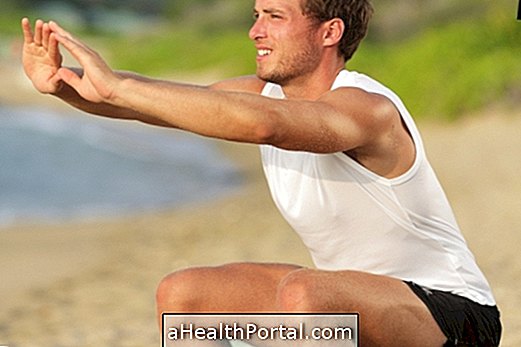
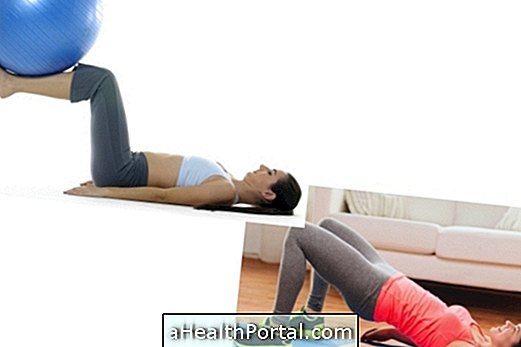
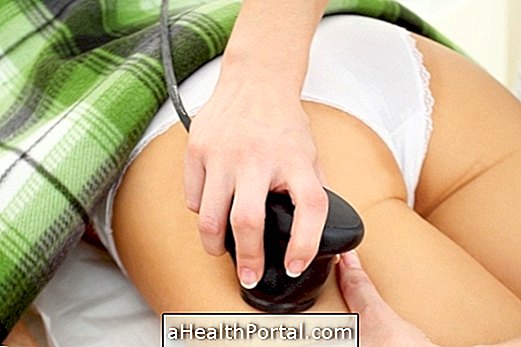
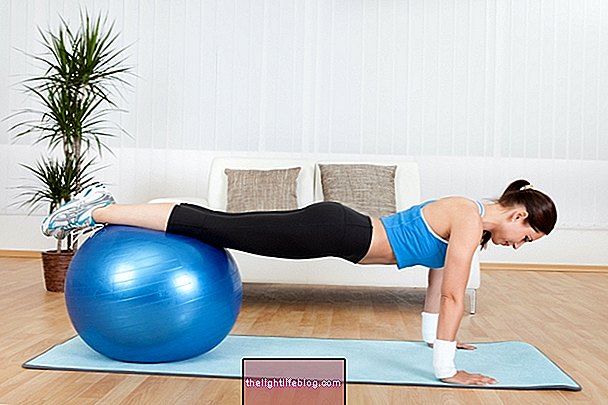












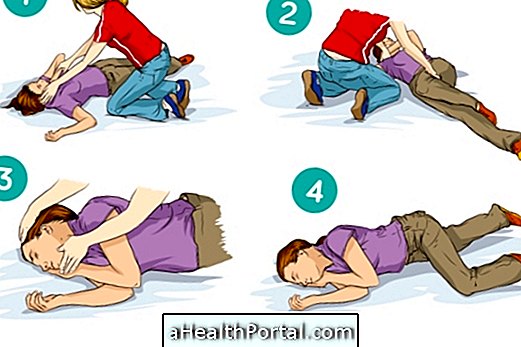

.jpg)
